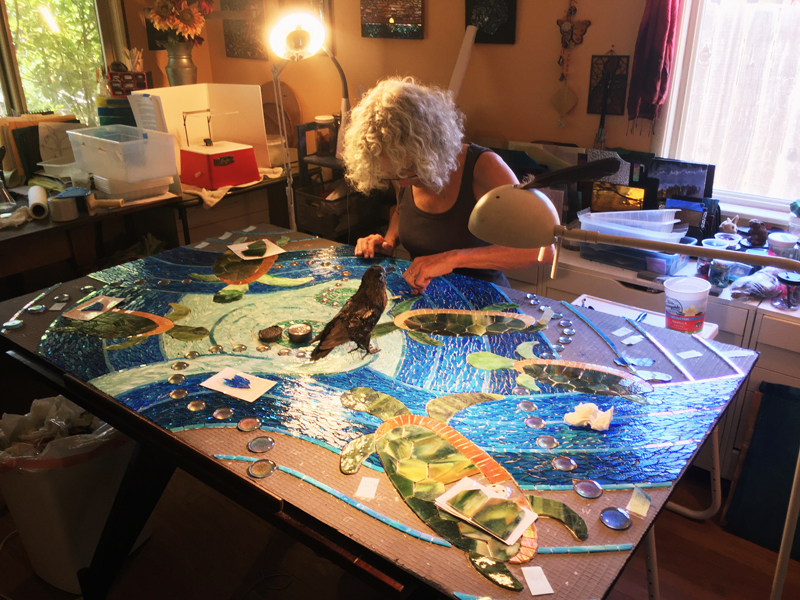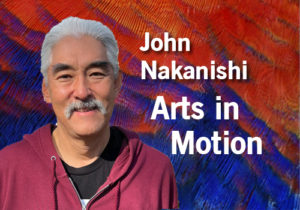Creating metaphysically mesmerizing mosaic

 CONCORD, CA (July 15, 2022) — Jane Russell works in mosaics, which is one of those media that I look at with fascination – something about its reflectiveness or perhaps the way the colors change depending on the placement.
CONCORD, CA (July 15, 2022) — Jane Russell works in mosaics, which is one of those media that I look at with fascination – something about its reflectiveness or perhaps the way the colors change depending on the placement.
Mosaic art gives me a different visual experience compared to looking at a sketch or a painting. Although similar to paper collage in artistry, mosaics require an understanding of different materials and the use of more sophisticated tools and techniques, but it’s worth the effort.
Russell shows her artwork in galleries in Placerville and Lincoln. In 2013, she created “Fire Dance” to commemorate her weeklong experience at Burning Man. The mosaic hung at Burning Man headquarters for nearly two years.
The piece depicts fire, a kite in the shape of the Burning Man’s head and large flames that suggest a female form rising from the fire.
“The female form emerged, unplanned, while I was creating the mosaic,” Russell notes. “I was pleased to promote the female presence at the event.”
Russell has only been an artist for ten years. She worked in the clerical field and as a school psychologist but is now retired. Growing up, she had little exposure to visual arts until middle school, when she took an elective in art history. She remembers enjoying the class, especially how she was drawn to impressionist paintings.
Endless possibilities
Russell discovered mosaics by chance. After joining a friend for a fused glass workshop at a mosaic studio in Oakland, she signed up for mosaic classes. She discovered pleasure in the process of creating mosaics as well as working with the materials.
Russell not only uses glass in her mosaics, but also incorporates shells, stone, plastic, sand, beads, recycled jewelry, seeds and more. “The possibilities are endless, which is exciting to me,” she says.
The process behind mosaic artwork is quite elaborate. She first creates a substrate, or base, onto which mosaic pieces are attached. Russell has used premade construction material such as cement board. Alternately, she might construct the substrate out of wire or fiberglass mesh and mortar.
Once the substrate is ready, she prepares an adhesive. The choice of adhesive depends on what materials are being used as well as whether the piece will be indoors or outdoors.
The big reveal
She then makes the mosaic pieces, or “tesserae.” If she wants glass tesserae, then sheets of glass must be cut into the desired shapes and sizes. On occasion, Russell uses an electric grinder to finetune the shapes. The repetitive process of preparing the glass puts a lot of strain on her hands, requiring rest breaks if she gets tired or start to cramp.
Each tesserae is placed precisely, making sure the spaces between pieces create the envisioned design.
Once the tesserae are all glued down and the adhesive has cured, she usually grouts the mosaic, filling the spaces between the pieces of glass.
“This very messy process reminds me of working in a darkroom when the photo begins to emerge. It’s when my vision is revealed, hopefully as imagined,” according to Russell.
View Russell’s artwork and learn more about her artistic journey at janerussellmosaics.com or facebook.com/janerussellmosaics.
Email comments and suggestions for future columns to phjona@gmail.com.

John Nakanishi
John Nakanishi is treasurer of The Concord Art Association. He is an acrylic painter and a ceramic artist. When John isn’t creating art, he coaches soccer for East Bay Eclipse, a competitive soccer club based in Moraga. He is also an avid trail runner, enjoying runs from 5 miles to 50K.




